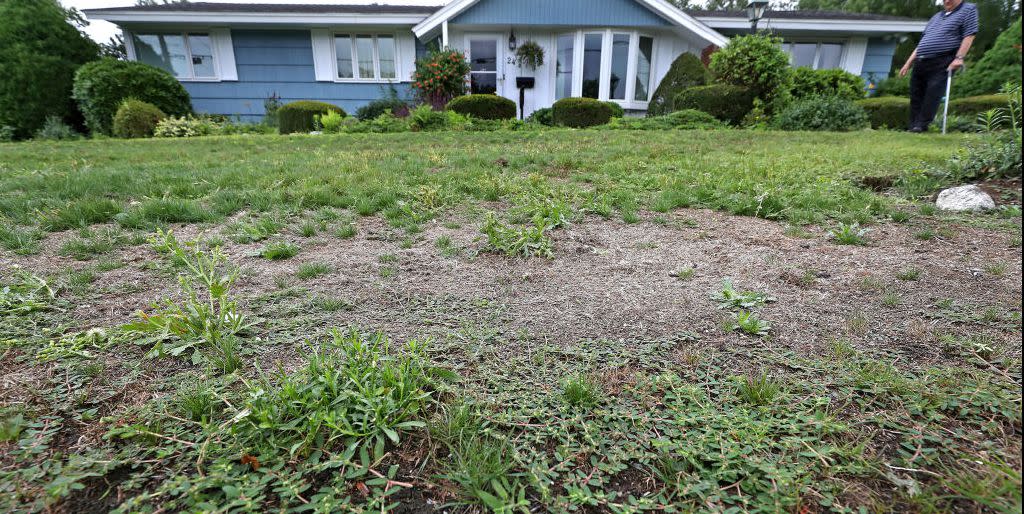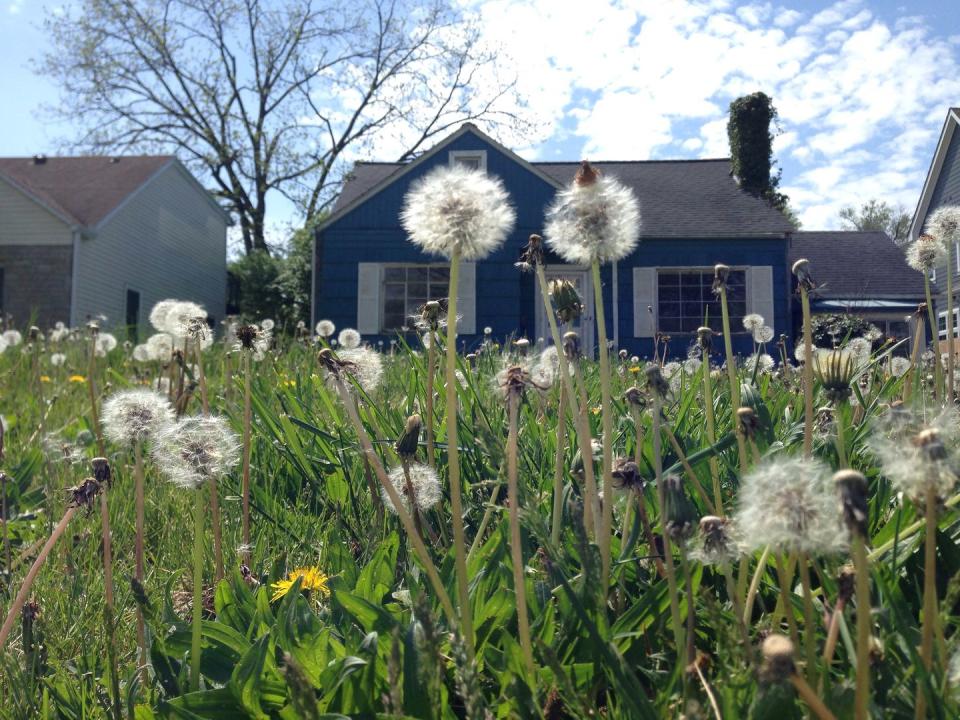How to Get Rid of Lawn Weeds

There are many different types of weeds that can spoil a lush, green lawn: crabgrass, dandelions, white clover, quack grass, wood sorrel, bindweed, broad-leaf plantain, cinquefoil and creeping charley to name a few. But regardless of which types of weeds you may encounter, getting rid of them can be challenging.
The best way to eradicate weeds is to use a two-prong approach of applying fertilizer and herbicide at different times of the year. A regular application of fertilizer produces strong, healthy grass plants that have a better chance of fighting off weeds. And herbicides have been proven to be effective at killing existing weeds and deterring the growth of new weeds.
Finally don’t discount the efficacy of getting down on your hands and knees and using weeding tool to dig up weeds, especially before they go to seed. And it’s best to hand-pull weeds when they’re still young and their roots haven’t had a chance to grow down deep into the soil. Yanking out older, more established weeds requires digging out the entire root system. Otherwise, they’ll just grow back.
Before treating or amending a lawn, it’s always best to start by testing the condition of the soil. Do-it-yourself soil test kits are sold at garden shops, home centers and hardware stores. For more comprehensive testing, contact your County Cooperative Extension office.
If the test reveals that your soil is slightly acidic, raise the pH level by adding pulverized lime. To lower the pH of moderately alkaline soils, add organic material, such as peat moss. For soil with extremely high pH, amend it with sulfur or iron sulfate.

It’s difficult to give specific lawn-care recommendations because so much depends upon the type of grass you have and in which region of the country you live. However, here’s an annual maintenance schedule that’s appropriate for most parts of the country. Follow this advice and you’ll end up with a greener lawn and many fewer weeds. (For more specific recommendations, check with a local landscaper or nursery.)
March-April
If crabgrass is present, use a walk-behind drop spreader to apply a pre-emergence crabgrass preventative agent. However, don’t apply it until the grass is green and has been mowed at least twice. This is also a good time to apply lawn fertilizer.
If you find clumps of crabgrass, that’s an indication of where the crabgrass seeds have settled. Treat these clumps with a post-emergence crab grass agent, applied two or three times over a seven-day stretch. Note that post-emergence agents are most effective in the spring, not in late-summer or fall when the seed heads have already formed.
May-June
Apply lawn fertilizer in mid-summer, if you didn’t do so in the spring. Treat dandelions and other broadleaf weeds, such as plantain and chickweed, with a dual-function “weed and feed” herbicide or broad-leaf weed killer.
You can also spot-kill individual weeds and weed clumps by using a pump-up sprayer to spray herbicide directly onto the weeds. For optimum results, apply the herbicide when the air temperature is between 65 and 85ºF, and there’s no rain in the forecast for 24 to 48 hours. And note that many broad-leaf weed killers come in concentrated formulas, which you can mix to the proper proportions; concentrates are also much less expensive than pre-mixed, ready-to-use products.
July-August
Inspect lawn for insect pests. If necessary, apply a grub-control agent.
September-October
Apply a fall fertilizer to strengthen the lawn and repair summer damage. Grass leaves grow much more slowly as the weather cools, but the grass roots and rhizomes continue to grow strong. (Rhizomes are the horizontal plant stems that lie just beneath the soil’s surface.)
Treat bare spots with an all-in-one Lawn Repair Mixture that contains grass seed, mulch, and a quick-start fertilizer.
Spread a layer of bark mulch over areas where grass doesn’t grow, but weeds do, such as around shrubs and beneath trees.
('You Might Also Like',)

